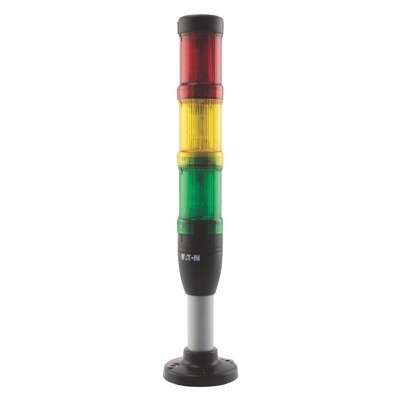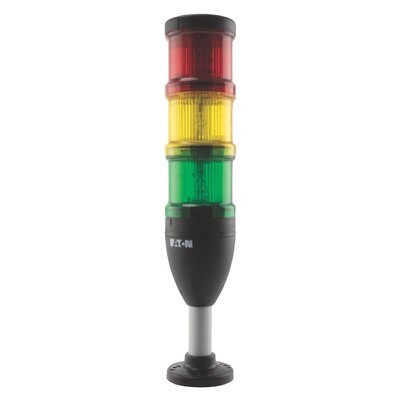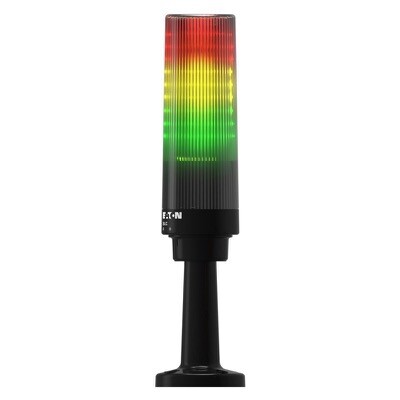A signal control tower, also known as a stack light or signal tower, is a device used in process control and manufacturing environments to provide visual indication of a machine's status. It helps factory staff monitor the operations and quickly respond to any issues or changes in the production process.
The structure of a signal control tower typically consists of a column with lights stacked on top of each other, hence the nickname "stack lights." These lights utilise various technologies such as LED, Xenon, or incandescent bulbs. The lights are colour-coded to represent different statuses or commands related to the machine or process being monitored.
The common colour codes and their corresponding meanings are:
- Red: Indicates a failure or emergency situation, such as an emergency stop or a machine fault.
- Orange: Indicates warnings, such as high temperature or pressure levels that could potentially lead to a fault.
- Green: Indicates normal machine operation, signalling that everything is functioning as expected.
- Blue: Indicates a request for external assistance, such as calling a supervisor for help or requesting additional raw materials.
- White: The meaning of the white light may vary depending on the specific application or factory requirements.
In addition to the visual indicators, some signal control towers also feature an audible alarm system to further alert personnel to changes in status or emergencies. Signal control towers play a crucial role in enhancing safety, efficiency, and productivity in manufacturing and industrial settings by providing clear and immediate visual cues regarding the status of machinery and processes.


